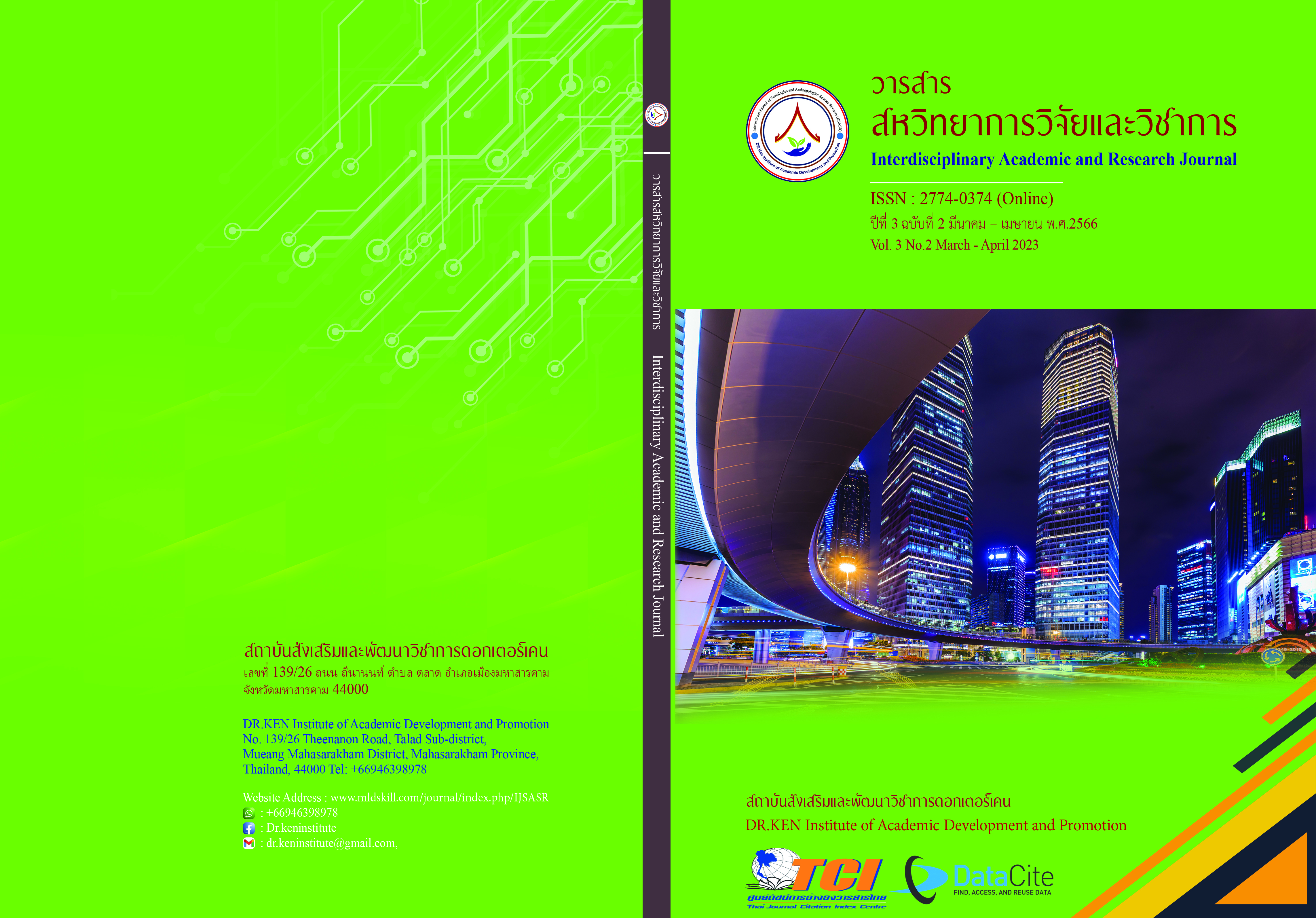The Buddha Dhamma Principles for Developing the Elderly life of Human Kind
DOI:
https://doi.org/10.14456/iarj.2023.70Keywords:
Long live; , The Elderly life of Human Kind; , Buddhadhamma; , Efficiency of lifeAbstract
The Elderly or old age people from the age of 60 onwards constantly change physically and mentally. Most people are afraid of these few things: to apply the principle of Buddha Dhamma to develop their ways of life, so as to adopt a better and happier life. Thus, the objective of this study on the Principle of Buddha Dhamma to develop old age people is to encourage them to live a happy and meaningful life, according to their own ways. The method of study will be from the research documents and the analysis of the research study. The Principle of the Buddha dhamma for the Elderly (old age) can be classified into 4 steps of their life span: (1) Pappharathasaka (Fragile): can apply the Practices of Buddhadhamma like Theradhamma principle by the elderly through their respectful observance of the precepts and practicing meditations, (2) Wangkathasaka (Handicapped): People who are handicapped like people who are with bent back, wheelchair bound, can practice the Dhamma of 7 Noble treasures to accumulate the Noble treasures to lead them to the permanent happiness or Nibbana, (3) Momuhathasaka (Oblivious aging): Those who are forgetful due to aging, and stress can use the practice of Mindfulness and Awareness, and accordingly do physical exercises, yoga, walking meditation, and mindful concentration, and (4) Sanyanathasaka (Bedridden): The elderly with full mindfulness and awareness can bring the three Characteristics of Dhamma into practice in their lives. The three Characteristics are: Impermanence, Dissatisfactions or Suffering, and No-self or selflessness, to let go of the attachment.
References
กรมกิจการผู้สูงอายุ. (2566). สถิติผู้สูงอายุ. Retrieved on February 26, 2023, from: https://www.dop.go.th/th/know/side/1/1/1159.
คณะกรรมการแผนกตำรา มหามงกุฏราชวิทยาลัย ในพระบรมราชูปถัมภ์. (2548). วิสุทธิมรรค แปล ภาค 3 ตอน 2 ตอนจบ. กรุงเทพฯ : มูลนิธิภูมิพโลภิกขุ.
คณะทำงานพัฒนาหลักสูตรการฝึกอบรมผู้ดูแลผู้สูงอายุร่วมกับกรมอนามัย กระทรวงสาธารณสุข. (2556). คู่มือแนวทางการฝึกอบรมผู้ดูแลผู้สูงอายุหลักสูตร 70 ชั่วโมง. นครปฐม: โรงพิมพ์สำนักงานพระพุทธศาสนาแห่งชาติ.
พระพุทธโฆสาจารย์. (2547). คัมภีร์วิสุทธิมรรค (แปลโดย สมเด็จพระพุฒาจารย์ อาจ อาสภมหาเถร). พิมพ์ครั้งที่ 5. กรุงเทพฯ: ประยูรวงศ์พริ้นท์ติ้ง.
มหาจุฬาลงกรณราชวิทยาลัย. (2539). พระไตรปิกภาษาไทย ฉบับมหาจุฬาลงกรณราชวิทยาลัย. กรุงเทพฯ: มหาจุฬาลงกรณราชวิทยาลัย.
ศรีประภา ชัยสินธพ. (2529). สภาพจิตใจของผู้สูงอายุ. Retrieved on February 26, 2023, from: https://www.rama.mahidol.ac.th/ramamental/generalknowledge/general/07172014-1131.
สำนักส่งเสริมสุขภาพ กรมอนามัย. (2553). การดูแลสุขภาพผู้สูงอายุระยะยาว. พิมพ์ครั้งที่ 1. กรุงเทพฯ : ชุมนุมสหกรณ์การเกษตรแห่งประเทศไทย จำกัด.
Fries, J.F., (1980). Aging, natural death, and the compression of morbidity. New England Journal of Medicine. 303(3), 130–135.
Fries, J.F., (1989). The compression of morbidity: near or far? Milbank Quarterly. 67(2), 208–232
Downloads
Published
How to Cite
Issue
Section
License
Copyright (c) 2023 สุดารัตน์ วงค์คำ, ประครอง งามชัยภูมิ, อนันตชัย ขันโพธิ์น้อย

This work is licensed under a Creative Commons Attribution-NonCommercial-NoDerivatives 4.0 International License.
Copyright on any article in the Interdisciplinary Academic and Research Journal is retained by the author(s) under the under the Creative Commons Attribution-NonCommercial-NoDerivatives 4.0 International License. Permission to use text, content, images, etc. of publication. Any user to read, download, copy, distribute, print, search, or link to the full texts of articles, crawl them for indexing, pass them as data to software, or use them for any other lawful purpose. But do not use it for commercial use or with the intent to benefit any business.
















.png)


